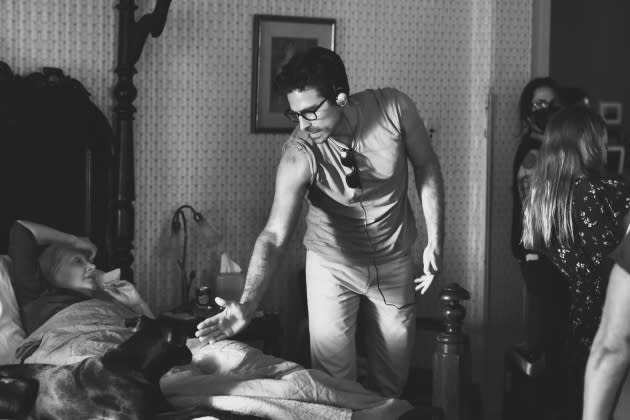Andrea Pallaoro on Directing ‘Transparent’ Star Trace Lysette in ‘Monica’
- Oops!Something went wrong.Please try again later.
- Oops!Something went wrong.Please try again later.
- Oops!Something went wrong.Please try again later.

Italian director Andrea Pallaoro is back on the Lido with English-language drama “Monica,” starring transgender actor Trace Lysette (“Transparent”) as a woman who returns home to the Midwest to care for her dying mother, played by Patricia Clarkson. His sophomore feature, “Hannah,” premiered at Venice with star Charlotte Rampling winning the festival’s Coppa Volpi for the best actress in 2017.
Pallaoro, who lives in L.A., spoke to Variety about making a film that is not about “transitioning per se,” he says, but about the title character’s rapport with the world long after the transition has occurred.
More from Variety
What drew you to the subject matter?
The initial fire behind “Monica” has been a need to come to terms or to understand or to attempt to understand better or to resolve the complexities of abandonment.
How did you cast Trace Lysette for the title role?
I auditioned over 30 people for this role, and not just in the U.S., so I cast a very, very broad net. And it was a process that took more than a year. When I met Trace, it was actually after that first meeting, I felt like she was the one that had the emotional depth to express what I needed. And also because of her own story and what she experienced herself, she not only understood the character and the project at large, but she had this unwavering commitment to tell this story.
I’m curious about the choice of Ohio as the film’s location.
Well, I should mention that Trace herself comes from Ohio. And that was just by chance. It’s one of those beautiful things that happen. But I considered a number of Midwestern states. I felt that the Midwest was important to create the contrast between a city like Los Angeles or New York, where Monica lives, and instead the place where she came from, and where [her] family is. Because there is a very strong dichotomy and very strong difference between these two worlds that I’m experiencing myself living in the U.S.
What’s the thrust of this story?
For me, it was always crucial that Monica was an expression of a woman who returns home and really connects. Who forgives, and finds a connection with the world that she had left behind for a number of reasons. And the trans experience that is explored in the film is not in the context of transitioning per se, but of the relationship that the character has with the rest of the world. It’s not a transition story, which is usually the case, I must say, with most of the films and the stories I have experienced with transgender characters at their center. There is a danger to that, because I think the mainstream audience is then brought to understand and experience these characters just within those parameters.
So with Monica, I wanted to open the breadth as much as possible and not focus on that single element. It’s a film that I hope will allow spectators to use Monica as a vehicle to see themselves reflected onto this character, onto the story, and onto these dynamics. And hopefully understand themselves better through her. Because that’s the real catharsis that I look for in film and I look for in art in general, and that I hope to be able to give an audience.
Best of Variety
'The Sopranos' Gets the Funko Pop Treatment in New Collectibles Release
From 'The Sandman' to 'Blonde': Books Made Into Movies and TV Series That You Should Read
Jennette McCurdy's Provocative Book 'I'm Glad My Mom Died' Is Already a No. 1 Bestseller
Sign up for Variety’s Newsletter. For the latest news, follow us on Facebook, Twitter, and Instagram.
